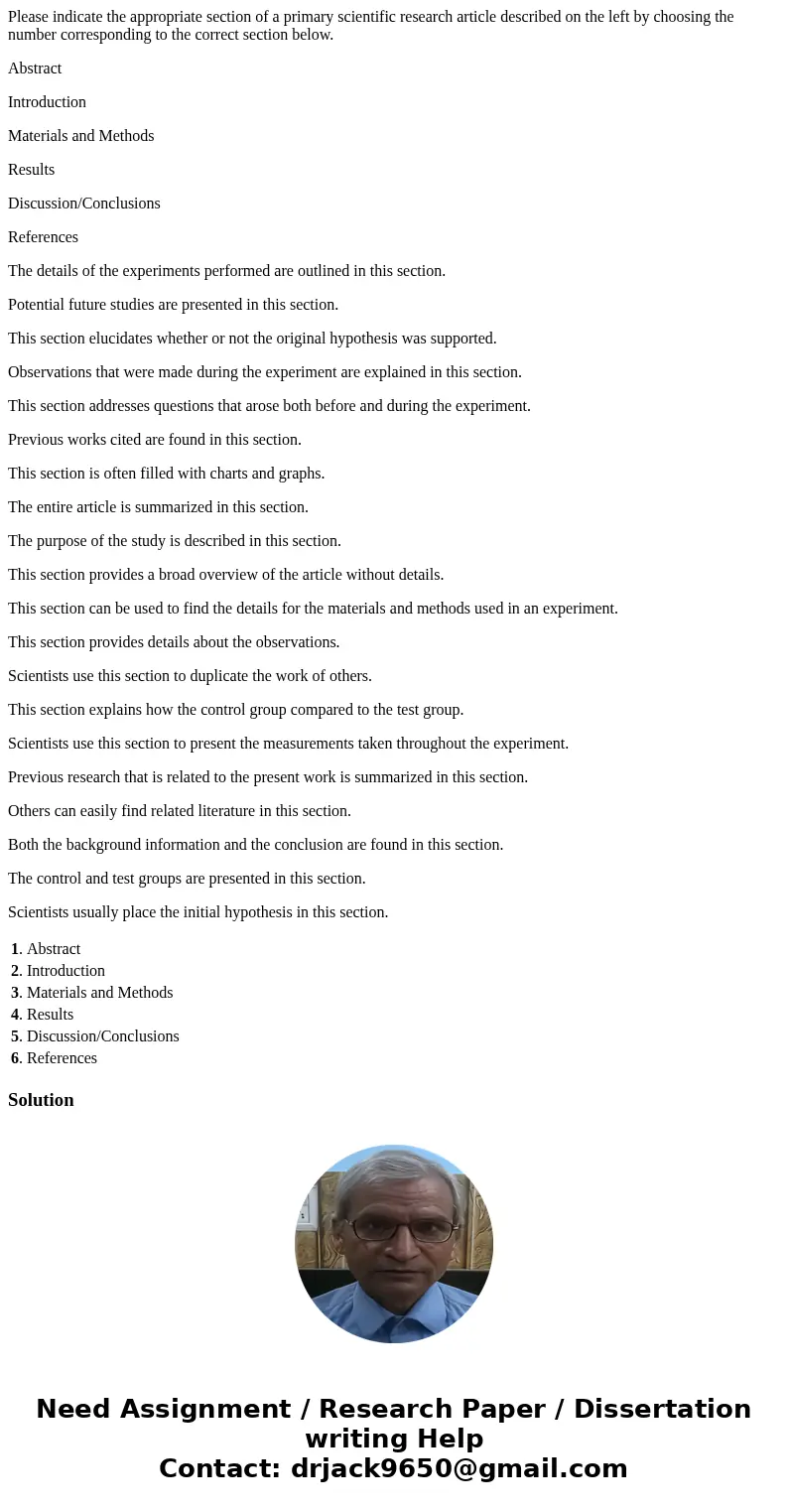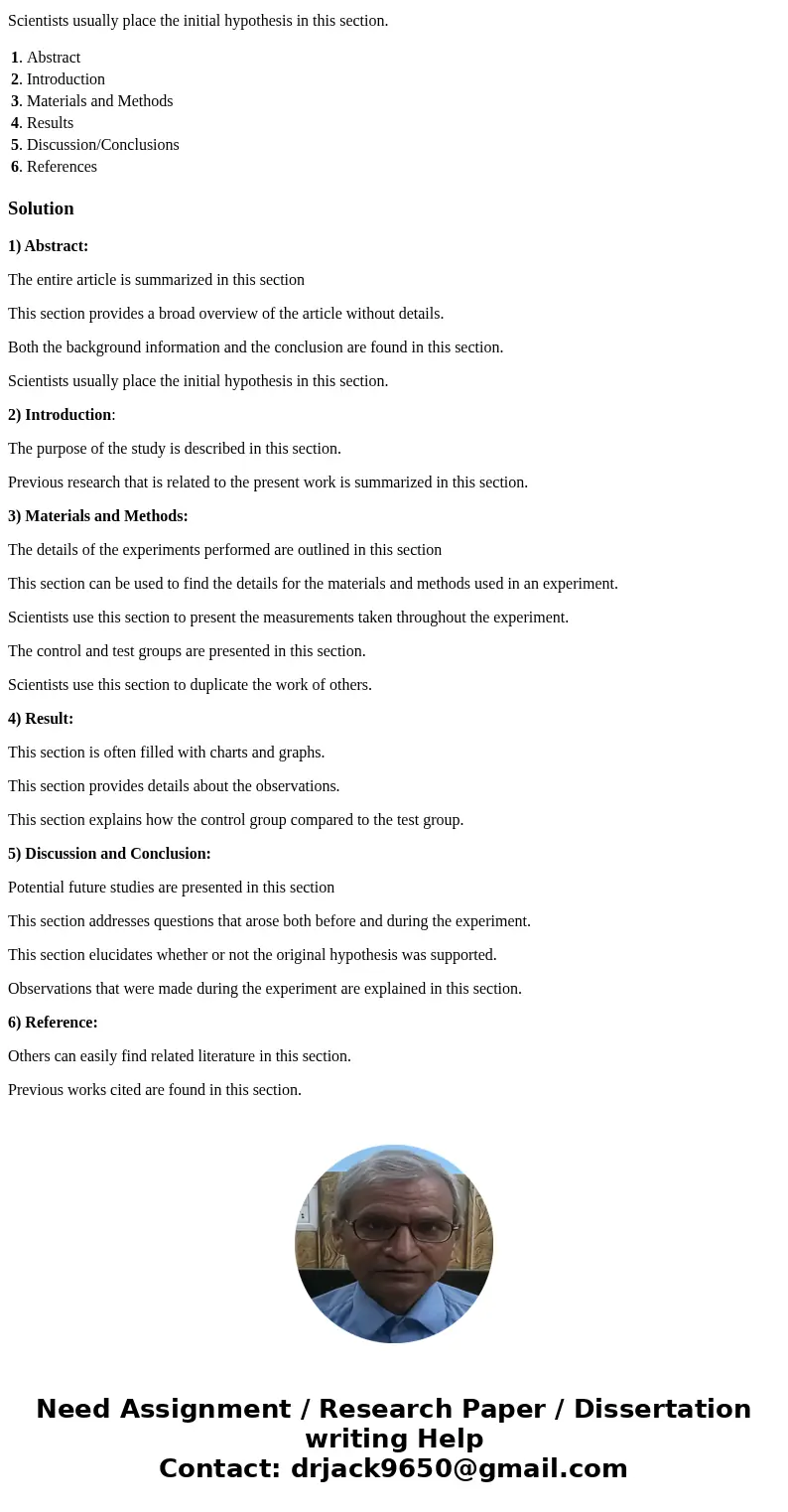Please indicate the appropriate section of a primary scienti
Please indicate the appropriate section of a primary scientific research article described on the left by choosing the number corresponding to the correct section below.
Abstract
Introduction
Materials and Methods
Results
Discussion/Conclusions
References
The details of the experiments performed are outlined in this section.
Potential future studies are presented in this section.
This section elucidates whether or not the original hypothesis was supported.
Observations that were made during the experiment are explained in this section.
This section addresses questions that arose both before and during the experiment.
Previous works cited are found in this section.
This section is often filled with charts and graphs.
The entire article is summarized in this section.
The purpose of the study is described in this section.
This section provides a broad overview of the article without details.
This section can be used to find the details for the materials and methods used in an experiment.
This section provides details about the observations.
Scientists use this section to duplicate the work of others.
This section explains how the control group compared to the test group.
Scientists use this section to present the measurements taken throughout the experiment.
Previous research that is related to the present work is summarized in this section.
Others can easily find related literature in this section.
Both the background information and the conclusion are found in this section.
The control and test groups are presented in this section.
Scientists usually place the initial hypothesis in this section.
| 1. | Abstract |
| 2. | Introduction |
| 3. | Materials and Methods |
| 4. | Results |
| 5. | Discussion/Conclusions |
| 6. | References |
Solution
1) Abstract:
The entire article is summarized in this section
This section provides a broad overview of the article without details.
Both the background information and the conclusion are found in this section.
Scientists usually place the initial hypothesis in this section.
2) Introduction:
The purpose of the study is described in this section.
Previous research that is related to the present work is summarized in this section.
3) Materials and Methods:
The details of the experiments performed are outlined in this section
This section can be used to find the details for the materials and methods used in an experiment.
Scientists use this section to present the measurements taken throughout the experiment.
The control and test groups are presented in this section.
Scientists use this section to duplicate the work of others.
4) Result:
This section is often filled with charts and graphs.
This section provides details about the observations.
This section explains how the control group compared to the test group.
5) Discussion and Conclusion:
Potential future studies are presented in this section
This section addresses questions that arose both before and during the experiment.
This section elucidates whether or not the original hypothesis was supported.
Observations that were made during the experiment are explained in this section.
6) Reference:
Others can easily find related literature in this section.
Previous works cited are found in this section.


 Homework Sourse
Homework Sourse